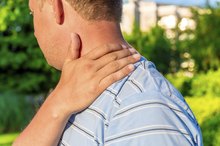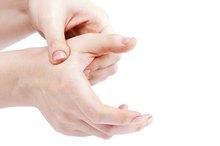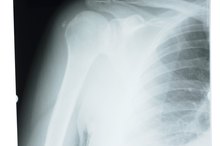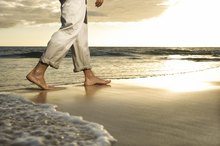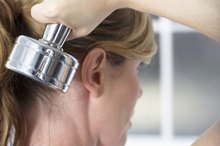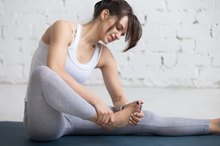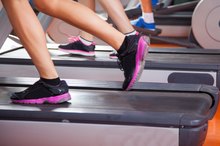Physical Therapy for Coracoclavicular Ligament Injuries
A tear or sprain to the coracoclavicular ligament by your shoulder can solicit a great deal of pain and inhibits normal shoulder movement. Physical therapy includes ice, anti-inflammatory pain medication and rest, followed by stretches and strength exercises to regain shoulder function. Because severe sprains may require surgery, consult your physician for the best treatment plan for you.
If you are experiencing serious medical symptoms, seek emergency treatment immediately.
Shoulder Separation
A coracoclavicular ligament sprain is associated with what is called a separated shoulder, which affects the acromioclavicular or AC joint. This joint is where your clavicle or collarbone connects to your shoulder blade at the acromion process. With a fall or hit to your shoulder, you can sprain or tear ligaments including your coracoclavicular ligament, which stabilize the AC joint. Partial or complete tears of the coracococlavicular ligament often indicate a moderate to severe shoulder separation, according to the American Academy of Orthopaedic Surgeons.
R.I.C.E.
Will a Torn Rotator Cuff Heal Without Surgery?
Learn More
During the acute phase, therapy consists of rest, ice, compression and elevation, also referred to as R.I.C.E. Ice several times a day in 20-minute increments to reduce inflammation and alleviate pain. Wear an elastic wrap around your shoulder and upper arm for compression and use a sling to keep it elevated and to prevent painful movements. Additional treatments include taking non-steroidal anti-inflammatory drugs such as ibuprofen and modalities like electrical muscle stimulation to further reduce pain and swelling.
Range of Motion
Once pain and inflammation subside, perform stretches and range of motion exercises to prevent further joint stiffness. Exercises include scapular or shoulder blade retraction, Codman’s pendulum, and internal and external rotation. Scapular retraction is squeezing your shoulder blades back while standing or sitting. Codman’s pendulum exercise is performed standing with the hand of your unaffected shoulder on a table for stability and your affected arm hanging down towards the floor. Slowly move your arm in a circular motion clockwise and then repeat counterclockwise. Your physical therapist may passively move your shoulder to further increase your flexibility as well.
Strength and Stability
Recovery & Rehabilitation Time for Shoulder Surgery to Remove Bone Spur
Learn More
After you regain normal range of motion, strength and stability exercises may be added to your rehabilitation program. Strength exercises include flexion and extension of your wrist, elbow and shoulder using light dumbbells or resistance bands. Performing one to three sets of 15 to 20 repetitions. Stability exercises are performed using a body blade or exercise ball. With the ball on the floor or wall, place your fist on the ball with your arm straight. Gently shift some of your body weight onto your arm and hold for one minute, repeating several times.
Return to Play
The final phases of physical therapy include functional or sport-specific exercises to prepare you for a full return to normal activities or your sport. Exercises may include ball-throwing drills like a medicine ball chest pass, swinging a bat or racket or swimming. Strength exercises like chest press, overhead press, shrugs, seated row and lat pull-down may be performed at this time as well. Perform exercises several times a week or as directed by your physical therapist.
Related Articles
References
- “Journal of Athletic Training”; Acromioclavicular Joint Injuries; Gloria M. Biem, M.D.; 2000
- American Academy of Orthopaedic Surgeons; Shoulder Separation; October 2007
- “Physical Therapy”; Physical Therapist Examination, Evaluation, and Intervention Following the Surgical Reconstruction of a Grade III Acromioclavicular Joint Separation; Lisa B. Culp, et al.; 2006
Writer Bio
Since 2007 Hannah Mich has written e-newsletters and been published in the "Missouri Journal of Health, Physical Education, Recreation and Dance." She has a Bachelor of Science in exercise science from Truman State University and a Master of Education in applied kinesiology from the University of Minnesota.

